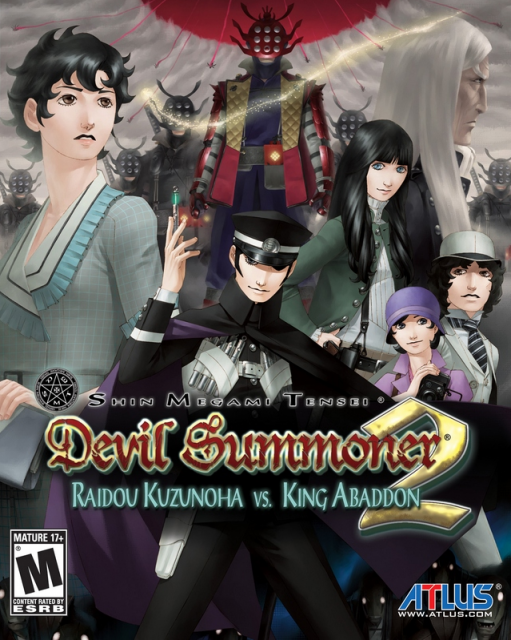Not quite Devil Summoner 3, but it’s definitely Devil Summoner 2.
Atlus’s creative director and infamous demon designer Kazuma Kaneko stated that Shin Megami Tensei: Devil Summoner 2: Raidou Kuzunoha vs. King Abaddon would seem like the third in the series, such would be its improvements and refinements over the first game, Shin Megami Tensei: Devil Summoner: Raidou Kuzunoha vs. The Soulless Army. What this loaded statement doesn’t take into account is that Soulless Army was more like Devil Summoner 0.5, with a simplistic battle system and a plot that took too long to turn its gears. And while the new elements in King Abaddon are of a great caliber, the leftovers from Soulless Army’s assets and design philosophy keep it from achieving a more broad appeal and the true change that came from touting it as “Devil Summoner 3.”
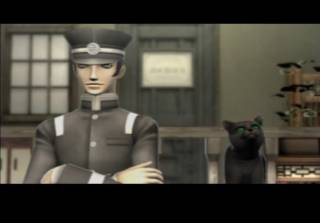
On the surface, if you’ve played Soulless Army, it will look like you’ve played King Abaddon, too – the game recycles most of the pre-rendered backgrounds from the first game. To offset this, there is a large area in the game that is all new, but some of its more forested areas have a particularly washed-out look to them that makes navigation more difficult than it should be, downright forcing you at times to catch your bearings through the automap. Many of the 3D character and demon models are also reused but are at least expressive and don’t undermine the gameplay in ways the pre-rendered backgrounds sometimes can. However, King Abaddon still has enough stylistic chops and penis demons riding chariots to belie the relative weaknesses of the PlayStation 2.
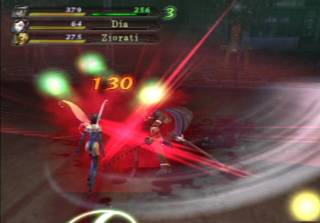
As a Devil Summoner, balancing your MAG is one of the key aspects of the battle system. MAG serves as a type of MP, with its gameplay twist being another take on the Press Turn system from Shin Megami Tensei: Nocturne or the knock-down attacks from Personas 3 and 4. When enemies are struck with their weakness, they get stunned, allowing Raidou to beat the MAG out of them – literally. As Raidou can now summon two demons to battle with him at once, MAG expenditure is a balancing act between using demon abilities like Agi or Zio spells, and gaining enough back from the stunned demon. It’s fun and satisfying to set alight Jack Frost or his kin and see the green stuff flying. It’s not Devil May Cry, but the MAG system adds some depth and strategy to battles that are otherwise simplistic, repetitive, and sometimes downright easy.
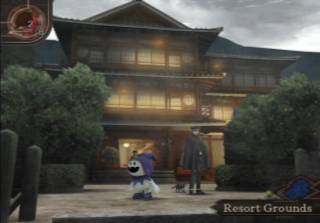
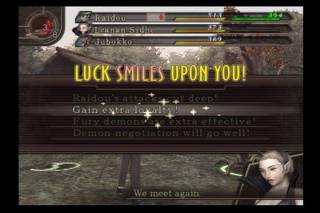
To stand the best chance of rounding up the most optimal demonic companions, you’ll have to make good use of the Goumaden. Run by the mad scientist Victor, the Goumaden allows you to fuse a pair of demons or even Raidou’s swords into more powerful forms. While largely the same as the Velvet Room or Cathedral of Shadows from other Shin Megami Tensei games, the way it integrates basic demon mechanics such as their loyalty to Raidou gives the Goumaden a truly addictive edge. When a demon’s loyalty is maxed through points gained after battles, they gain a passive skill that enhances their abilities. When this demon is fused, its passive skill is carried over to the resulting one, into a permanent general pool that can be manually selected. This is a vast improvement over previous games where the only way to get the abilities you want was random chance through canceling in and out of the fusion menu. Granted, demons’ battle abilities are still selected through such a method, but the passive skill system definitely softens the need to do so and is a great step forward.
Despite the muted characters, the remaining audio is highlighted by the various noises each of the demons make and the catchy soundtrack by series mainstay Shoji Meguro. The guitar-laden battle themes in particular – Meguro’s bread and butter – are suitably energetic or tense when the situation needs it. Like other elements in the game, some of the music is lifted directly from Soulless Army, which had a relatively weak soundtrack, but what’s new is definitely of a higher quality.Persona fans who are intrigued that King Abaddon shares the Shin Megami Tensei name should pause to consider that Raidou’s latest adventure is more similar to actual Shin Megami Tensei games like Nocturne. For that crowd, King Abaddon’s darker tone and more stoic characterization may disappoint those looking to eat some ramen and get it on after school. While dedicated fans should be satisfied, Devil Summoner 2: Raidou Kuzunoha vs. King Abaddon’s occasional stumbles don’t mar its status as an overall improved sequel that’s a recommended way for others to discover what the greater Shin Megami Tensei series is all about.
